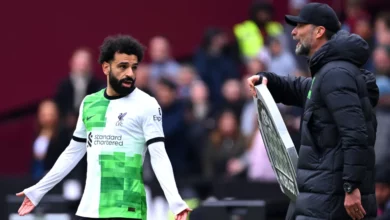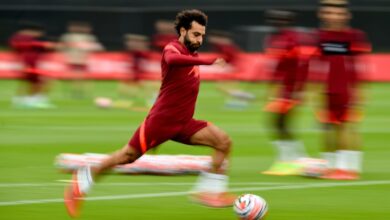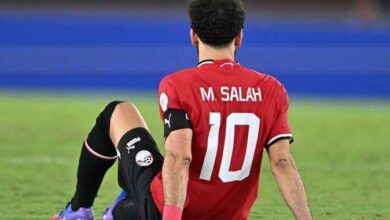
I watched endless re-runs of the final moments of the Ahly–Masry game in Port Said in a restaurant, on a muted television. Silent images of a man triumphantly carried on someone’s shoulders and hurriedly put down as hordes of men fill the pitch and pursue the Ahly players, shown again and again. The celebrations turned so quickly, so seamlessly, into violence and tragedy.
Hundreds of youths gathered outside Ahly’s Cairo base the next day, chanting against Port Said, against Ahly director Hassan Hamdy, against the Interior Ministry, against the ruling Supreme Council of the Armed Forces (SCAF).
At one point screams interrupted the chants. A young woman banged her head on the roof of a car while next to her an older woman collapsed on the ground. They had just heard that their relative, 16-year-old Islam Ahmed, was amongst the stadium’s dead.
Later a man shouted at men behind the Ahly Club’s locked gates, “what did the people that died have to do with politics?” It was a question repeated by several Ahly fans outside their club, grumbling about the presence of “Tahrir people” “politicizing” their loss and using it for mileage in their campaign against the SCAF.
But they were a minority. The march that eventually left the club at 4 pm was dominated by chants condemning SCAF, and calling for the execution of the field marshal. Chants by the famously obscene Ultras Ahlawy (the football firm of Egypt’s top team) now target the military, and they echoed round downtown Cairo’s streets when the march arrived there.
The march stopped at the Mohamed Mahmoud Street wall, near Tahrir Square, and some protesters immediately clambered on top of it and began trying to dissemble it. Other protesters standing below called on them to stop, and chanted "selmeya, selmeya" (peaceful, peaceful). The men on the wall looked down on them in disgust. “Yes we’re thugs!” one said, sardonically, thumping his chest. “We’re being paid to do this.”
In Falaky Square another huge march was headed for the streets leading to the Interior Ministry building. My heart sank when I saw them turn into Mansour Street. I had been there a week ago, during the January 25 anniversary protests/celebrations, and noted the fragile looking barbed wire and line of bored riot police standing behind it, 500 meters away from the Interior Ministry. It was a confrontation waiting to happen.
The demonstration turned into Mansour Street. A tangible surge of energy went through the protest as it rumbled onwards towards the barricade. There was such a terrible inevitability about what would happen next, it was like watching an army march to war.
It didn’t take long for the riot police to lose patience, as usual. Protesters knocked down the barbed wire and then busied themselves with disassembling it. The riot police retreated two meters. There was no attempt by the protesters to push them back further. But the riot police soon tired of the occasional rock thrown at them and the tear gas started; frequent, intense volleys of it. The cycle began.
Many of the protesters wore football insignia. Famous rivals Zamalek and Ahly temporarily put hostilities aside and their fans stood side by side on the frontline. Their involvement, and the whole Port Said incident, is another interesting dimension of football’s complicated relationship with the state.
Leading Egyptian football clubs are big business and have a huge public following. Their fans have always enjoyed a certain autonomy as a result.
Between 2007 and 2011, during the repression of the Mubarak years, I attended four mass public gatherings: street celebrations for Egypt’s victory in the African Cup; Muslim Brotherhood organized protests during Israel’s 2009 attack on Gaza; riots following the Egypt–Algeria debacle; and finally the January 25 protests and what followed.
There was such a sense of freedom during the African Cup celebrations when the normal rules didn’t apply, and the streets were temporarily handed over to the people. And then again that strange police absence during the protests over the Egyptian football team’s treatment in Algeria. Protests during which the state of emergency was temporarily and informally suspended and young men ran amok around the Algerian Embassy.
The old adage was that football was used as a distraction from political repression, as a vent for Egypt’s angry young men. In Port Said, the theory goes, it was used as a spark, another installment of the chaos proponents of this theory say is being deliberately incited.
There are layers upon layers of history in the Port Said Stadium tragedy: a decades long rivalry between Ahly and Masry, the last episode of which was last year, when Ahly fans rioted in Port Said; a society in which violence has been tolerated — condoned even — for years, in police stations and schools; an incompetent and corrupt police force stripped of its tools now that rampant abuse is less tolerated; and the legacy of generations of young men informally employed by the Interior Ministry and other regime elements as informers/heavies.
Whether or not the Port Said massacre was deliberately orchestrated should perhaps not be the focus now. We may never know the truth of why this happened, but how it happened is clear: men were allowed into stadiums with weapons, doors were closed on a panicked crowd, and as a result at least 71 boys and young men were stabbed or crushed to death.
Part of a sinister plot to plunge Egypt into mayhem or not, responsibility for the Port Said events goes to the very top. The failure to acknowledge this is the true chaos of Egypt.




